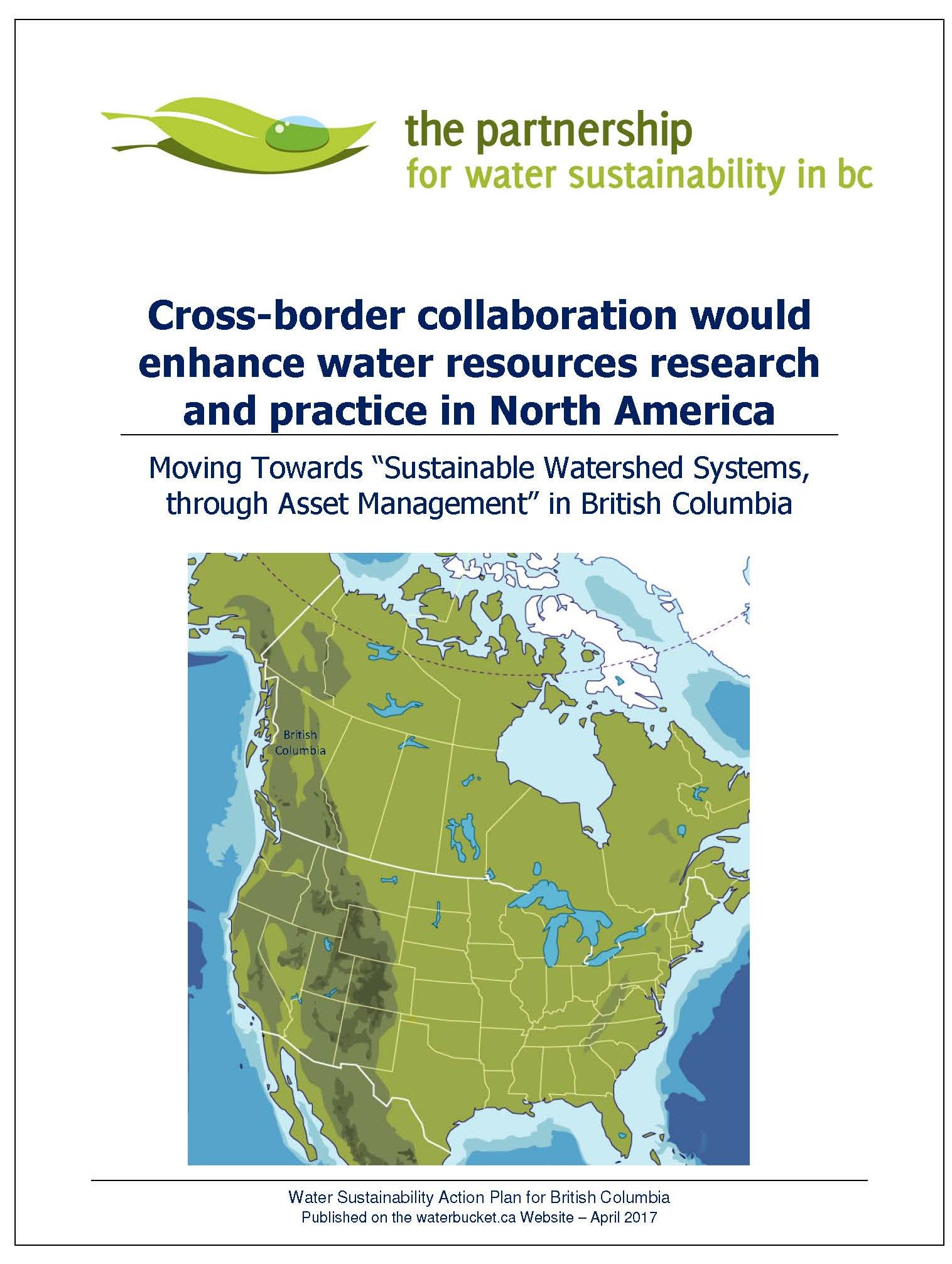British Columbia’s Partnership for Water Sustainability and Urban Watersheds Research Institute have an agreement to collaborate: "The Water Balance Model’s QUALHYMO engine is now linkable with SWMM," reported Jim Dumont
Synergies in Action
Given the evident benefits of strategic interaction, the Partnership for Water Sustainability in British Columbia and the Urban Watershed Research Institute (UWRI) have an agreement to collaborate regarding reciprocal benefits and joint actions related to water resources research and practice in North America.
The focal point for collaboration is the newly formed and US-based Center for Infrastructure Modeling and Management (ncimm.org).
To Learn More:
Download Cross-border collaboration would enhance water resources research and practice in North America: Moving Towards “Sustainable Watershed Systems, through Asset Management” in British Columbia to read the complete story.
Cross-border collaboration opens the door
to sharing and learning
“Under an agreement with the US Environmental Protection Agency, ncimm.org has been created to provide sustainable research, development and outreach for water  infrastructure modeling, initially focusing on two foremost modelling tools – known around the world by the acronyms EPA SWMM and EPANET,” states Dr. Charles Rowney, the Center’s Director of Operations.
infrastructure modeling, initially focusing on two foremost modelling tools – known around the world by the acronyms EPA SWMM and EPANET,” states Dr. Charles Rowney, the Center’s Director of Operations.
“We will certainly tap into the British Columbia Partnership’s Water Balance Model experience as the Center explores options for SWMM and EPANET deployment beyond the desktop.
British Columbia’s Whole-System,
Water Balance Approach
“The British Columbia Partnership’s understanding of hydrology and watershed management issues in the Pacific Northwest provides some intriguing insights into new diagnostics, targets and interpretation needs for watersheds, and the tools we develop will very likely need to embrace those ideas,” continues Dr. Rowney.
“ Cross-border collaboration through ncimm.org opens new doors for the Partnership for Water Sustainability,” adds Jim Dumont, the Partnership’s Engineering Applications Authority.
Cross-border collaboration through ncimm.org opens new doors for the Partnership for Water Sustainability,” adds Jim Dumont, the Partnership’s Engineering Applications Authority.
“The Water Balance Model’s QUALHYMO calculation engine is now linkable with SWMM. This would fill a need in watershed assessment and enable setting of performance targets for a whole-system, water balance approach to restoring and protecting watershed health.”
To Learn More:
Visit www.waterbalance.ca, the home of QUALHYMO.
Visit ncimm.org, the home of SWMM and EPANET.
Water Balance Methodology
“Watershed protection starts with an understanding of how water gets to a stream, and how long it takes,” continues Jim Dumont. “Protection of watershed and stream health in the urban environment ultimately depends on maintaining the natural proportion of rainwater entering streams via three pathways: overland runoff, shallow interflow and deep groundwater flow.
 “The innovation of the Water Balance Methodology is in the way it integrates and applies standard scientific and engineering principles to address these components in ways which are not typically applied in planning and design of municipal infrastructure.
“The innovation of the Water Balance Methodology is in the way it integrates and applies standard scientific and engineering principles to address these components in ways which are not typically applied in planning and design of municipal infrastructure.
“Tools like SWMM and QUALHYMO can enable the hydrologic computations; it is up to us to recognize the need, and to deliver tools that facilitate the analysis. I expect that discussions about methodology will be as much a part of the new Center as the development of new code,” concludes Jim Dumont.
To Learn More:
 The “Beyond the Guidebook Primer Series” supports implementation of targets and actions listed in Living Water Smart: British Columbia’s Water Plan. The targets and actions establish expectations as to how land will be (re)developed so that stream and watershed health are protected and/or restored.
The “Beyond the Guidebook Primer Series” supports implementation of targets and actions listed in Living Water Smart: British Columbia’s Water Plan. The targets and actions establish expectations as to how land will be (re)developed so that stream and watershed health are protected and/or restored.
The Primer on Water Balance Methodology for Protecting Watershed Health is the fifth in a series of guidance documents that form the basis for knowledge-transfer via the Georgia Basin Inter-Regional Education Initiative (IREI). The foundation document for the series is Stormwater Planning: A Guidebook for British Columbia, released in 2002.
The goal in producing the “Beyond the Guidebook Primer Series” is to facilitate inter-regional collaboration, such that sharing and cross-fertilization of experience and understanding helps all local governments go farther, more efficiently and effectively.





